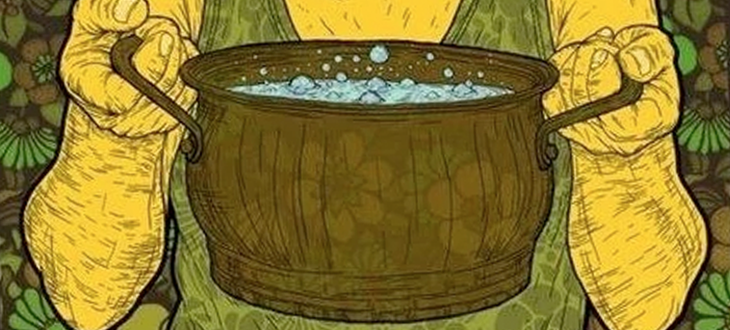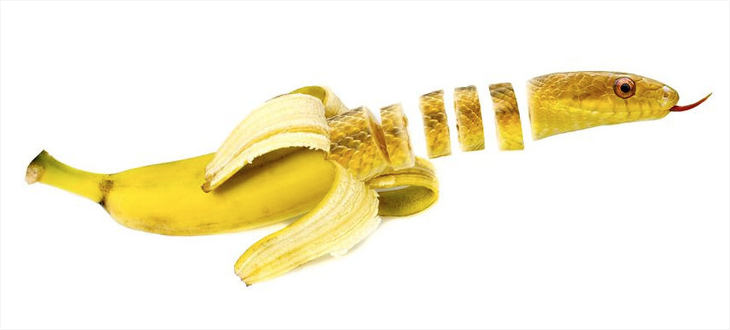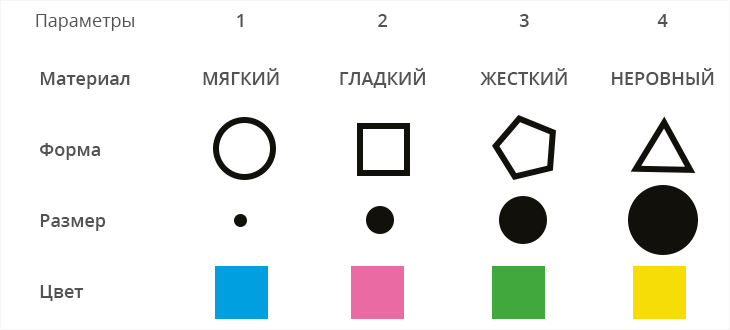Pot vari or 4 methods of creative approach to solving problems

In the recently read book by Dmitry Chernyshev “How people think,” she drew attention to methods that help to find ideas and invent something new. Methods, of course, much more. The same TRIZ, about which they talk so much, but I decided to dwell on those that the author of the book gives.
Synectic method

')
Designed by American inventor William Gordon. Formed from Greek roots and can be translated as "combining disparate elements."
Gordon believed that the main source of creativity was in the search for analogies and singled out four types - direct, symbolic, fantastic and personal.
With a direct analogy
the object under consideration is analogy in the world around us. In nature or technology.Symbolic
- based on the use of various comparisons, metaphors and the search for paradoxes in familiar and familiar things or phenomena. This type of analogy is aimed at finding the unusual in the ordinary and the ordinary in the unusual, that is, the definition and characterization of objects and phenomena from an unexpected side.Fantastic analogy
free from any restrictions that reality imposes on us. Representation of the object under study in unreal, fantastic conditions, where usual laws and phenomena do not work. This allows you to come up with a solution without reference to objective reality.Personal analogy
puts the person in the place of the object in question. It is necessary to present yourself in the role of the subject being studied and to try on its functions. Personal analogy makes it possible to discard stereotypical limitations of thinking and look at the subject from an unusual angle.If it is even shorter, the direct analogies are real, symbolic - abstract, fantastic - unreal, subjective - physical.
A striking example of the application of the method of synectics in practice is the innovation in the production of potato chips Pringles.
The American company Kellogg, engaged in the production of breakfast cereals, faced an insoluble problem: how to reduce the amount of air in the package with chips to make it more compact, but at the same time prevent the crumbling of a fragile product. The management of the company attracted W. Gordon to the solution of the problem. Using the method of synectics, he drew an analogy between chips in a package and fallen leaves, which is collected in garbage bags. Dry foliage fills more space than wet. Wet leaves are softer and more plastic, so you can pack them in trash bags in a larger volume, and thus save on the number of packages used. By this analogy, he proposed to manufacturers a new method of forming and wetting dry potato flour, from which chips are made. This made the packaging more compact.
Focal object method

It was invented in 1923. The founder is a professor at the University of Berlin Friedrich Kunze. Later, an American researcher, Charles Whiting, became interested in the method. He eventually refined and improved it.
It was he who invented the name "method of focal objects." The name is based on the concept of “focus”, that is, it means focusing attention on the selected object.
The process is simple: the properties and characteristics of other randomly selected objects are attached to the object under study.
The method consists of six consecutive steps.
- Select the focal object, that is, the object that needs to be improved or the problem to be solved.
- We select several random objects, in the role of which can be various words and concepts. They can be taken from a book, newspaper, magazine, dictionary. These should be nouns and their subject should be different from the subject of the object itself.
- Select the various properties, characteristics, functions and features of selected random objects and write them down on paper.
- Found properties and characteristics alternately attach to the main object.
- With the help of various associations there is a further development of the invented options.
- We evaluate the results obtained from the point of view of efficiency, utility and the possibility of practical implementation.
Example: Take a flashlight and add the properties of the words glasses, felt boots, parachute. You can get warm (eg heated handle), color (different colors of the emitted light), a trendy flashlight.
Morphological analysis

To generate new ideas. Invented the Swiss astronomer Fritz Zwicky. It is based on the construction of a table that lists all the main elements that make up the object and possibly indicates a larger number of known options for implementing these elements. By combining options for implementing the elements of an object, you can get the most unexpected new solutions.
The sequence of actions is as follows:
- Formulate the problem exactly.
For example: Business card. More precisely: a bright unique visit card of the dentist, which is difficult to forget). - Identify the most important elements of the object.
Example: form, business card cover - Identify options for the performance of elements.
- The main recommendation is that no assessments of options should be carried out until the morphological set has been completed. An example of the parameters of an object: the shape of a business card is a ball, a rectangle, etc., the coating is plastic, cardboard, sausage, etc.
- Put them in the table.
- Evaluate all options in the table, analyze and evaluate in terms of goals to be achieved.
Examples: edible round, rectangular plastic, etc. Choose the best option.
For example , you need to come up with a business card for a perfume company. If you change the classic rectangular shape and the effect on the senses, you may receive a triangular business card with the smell of perfume.Mental card method

The author of the method is the British psychologist Tony Buzan. In his opinion, creativity is directly related to memory.
How to draw a mental map:- Take a piece of paper and write in the center in one word the main theme, which is devoted to the map. Enclose it in a closed loop.
- From the central theme draw branches and place on them the keywords that are associated with it.
- Continue to expand the map, adding to the already drawn branches branches with keywords until the topic is exhausted.
- The process of drawing a map contributes to the emergence of new associations, and the image of the resulting tree remains in memory for a long time.
Rules for working with mental maps
The technique seems intuitive, however, the following rules help to significantly improve its effectiveness.- Write one word on one branch. This approach saves time and space and contributes to better readability of the card.
- Place the sheet horizontally - it will be more convenient to read such a map.
- Place keywords directly on the lines representing their relationship. Do not enclose them in any framework. Write on each line only one keyword.
- Use different colors for the main branches so that they do not merge visually.
- Vary the size of the letters in the inscriptions and the thickness of the branches depending on the degree of distance from the main theme.
- Position the branches evenly - do not leave empty space and do not place the branches too tightly.
- Use pictures and symbols (at least - for the central theme, better - for all main branches).
If you are drawing a complex map, it makes sense to first sketch a mini map with the main branches to determine the structure of the future map, since the choice of the main branches affects the organization and readability of the mapAnd the last tip from the book
“To come up with even the most wonderful idea is only half the battle. It must be conveyed to the interlocutor. To convince him. There is nothing wrong with the fact that your idea is not immediately accepted. Bill Gates told his staff that if no one laughed at least one of their ideas, they might not be creative enough to work. This is a barrier that needs to be overcome. ”
New creative ideas and inspiration!
Source: https://habr.com/ru/post/352526/
All Articles